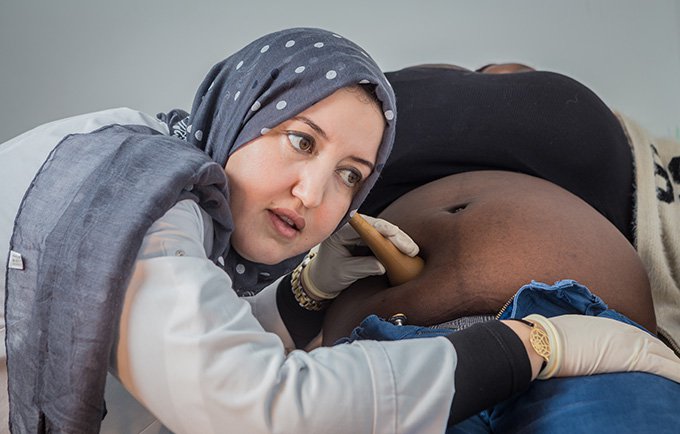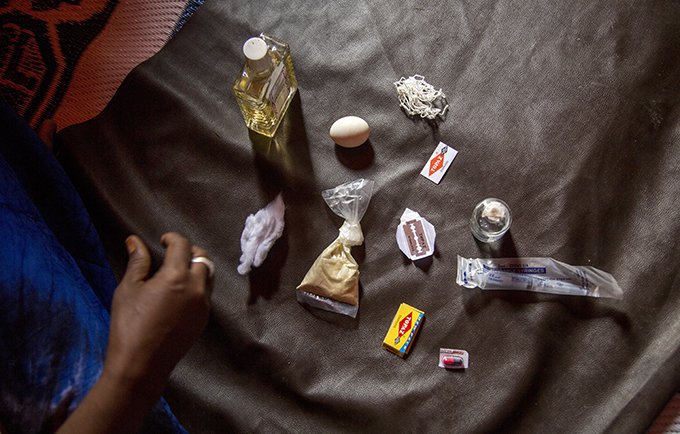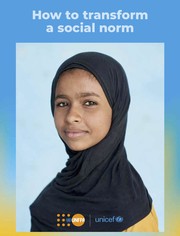What is FGM?
FGM refers to all procedures involving partial or total removal of the external female genitalia or other injury the female genital organs for non-medical reasons. It is a deeply entrenched social and cultural norm in many places.
The practice can cause short- and long-term health complications, including chronic pain, infections, increased risk of HIV transmission, anxiety and depression, birth complications, infertility and, in the worst cases, death. It is internationally recognized as an extreme violation of the rights of women and girls.
FGM violates human rights principles and standards – including the principles of equality and non-discrimination on the basis of sex, the right to freedom from torture or cruel, inhuman or degrading punishment, the right to the highest attainable standard of health, the rights of the child, and the right to physical and mental integrity, and even the right to life.
In 2012, the United Nations General Assembly unanimously adopted the first-ever resolution against female genital mutilation, calling for intensified global efforts to eliminate the practice. In 2015, FGM was included in the Sustainable Development Goals under Target 5.3, which calls for the elimination of all harmful practices.
Yet the practice remains widespread. In 2019, it is estimated that 4.1 million girls are at risk of FGM. And because of population growth, this number is projected to rise to 4.6 million girls in the year 2030, unless efforts to end FGM are intensified. If FGM continues at the current rates, an estimated 68 million girls will be cut between 2015 and 2030 in 25 countries where FGM is routinely practiced and relevant data are available.
Why is FGM still practiced?
In every society where it is practiced, FGM is a manifestation of deeply entrenched gender inequality. It persists for many reasons. In some societies, for example, it is considered a rite of passage. In others, it is seen as a prerequisite for marriage. In some communities – whether Christian, Jewish, Muslim – the practice may even be attributed to religious beliefs.
Because FGM may be considered an important part of a culture or identity, it can be difficult for families to decide against having their daughters cut. People who reject the practice may face condemnation or ostracism, and their daughters are often considered ineligible for marriage. As a result, even parents who do not want their daughters to undergo FGM may feel compelled to participate in the practice.
Encouraging abandonment
Collective abandonment, in which a whole community chooses to no longer engage in FGM, is an effective way to end the practice. It ensures that no single girl or family will be disadvantaged by the decision. Many experts hold that FGM will only end through collective abandonment.
The decision to collectively abandon FGM requires a process in which communities are educated about FGM, and then discuss, reflect and reach consensus on the issue. The health and human rights aspects of FGM should feature prominently in these dialogues, and local and grassroots organizations should play an important role in raising awareness and educating communities.
When communities choose to abandon the practice, they often participate in a collective public declaration to keep their girls uncut, such as signing and circulating a public statement or hosting festivities to celebrate the decision. Neighbouring communities are often invited to these events so they can see the successful process of abandonment, helping to build momentum for collective abandonment elsewhere.
Medicalization
About 1 in 5 girls who have been subjected to FGM had the procedure performed by a trained medical professional. In some countries, this number is as high as 3 in 4 girls.
FGM can never be “safe” and there is no medical justification for the practice. Even when the procedure is performed in a sterile environment and by a health care professional, there can be serious health consequences immediately and later in life. Medicalized FGM gives a false sense of security. Trained health professionals who perform female genital mutilation are violating girls’ and women’s right to life, right to physical integrity and right to health. They are also violating the fundamental medical mandate to "do no harm," and it represents a threat to efforts to abandon the practice.
UNFPA is working to mobilize health workers, including midwives, to resist social pressure to perform FGM, and serve as advocates for prevention and protection in the communities they serve.
What UNFPA is doing
In 2008, UNFPA and UNICEF established the Joint Programme on FGM, the largest global programme to accelerate abandonment of FGM and to provide care for its consequences. This programme works at the community, national, regional and global levels to raise awareness of the harms caused by FGM and to empower communities, women and girls to make the decision to abandon it.
Now in its third phase of implementation, the Joint Programme has helped more than 3.2 million girls and women receive prevention, protection and care services related to FGM. Some 31.6 million people in more than 21,700 communities in 15 countries with high FGM prevalence have made public declarations to abandon the harmful practice. And the Joint Programme helped 17 governments set up national FGM response mechanisms. Following intensive capacity development initiatives, there have been more than 900 cases of legal enforcement to date.
UNFPA also helps strengthen health services to prevent FGM and to treat the complications it can cause. UNFPA also works with civil society organizations that engage in community-led education and dialogue sessions on the health and human rights aspects of the practice. The Fund works with religious and traditional leaders to de-link FGM from religion and to generate support for abandonment. And UNFPA also works with media to foster dialogue about the practice and to change perceptions of girls who remain uncut.
With the support of UNFPA and other UN agencies, many countries have passed legislation banning FGM – including, in 2015, Nigeria and The Gambia – and developed national policies to achieve its abandonment.
Last updated 31 July 2019.









